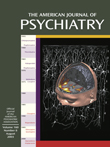Treating Attachment Disorders: From Theory to Therapy
This very readable translation focuses on the attachment work and legacy of John Bowlby and its clinical application by Karl Heinz Brisch. This could be of interest to at least three groups of American psychiatrists. The first would include psychiatrists trained just after World War II, the heyday of psychoanalytic theory and therapy, who want to take a leisurely trip back to when intrapsychic conflicts were considered etiological and external conflicts between psychoanalyst gurus and their adherents were on an international scale. They may remember how Bowlby’s biologically based attachment theory moved considerably from the psychoanalytic theory of his mentors such as Anna Freud and Melanie Klein. Bowlby maintained an independent view in their midst while working as a child psychiatrist and adult analyst at the Tavistock Clinic and British Psychoanalytic Society.
The second group of potential readers includes today’s neuroscientifically trained residents, especially those with a child orientation, who may disavow psychoanalysis and might have missed attachment theory in the course of training. For them the operational definitions of terms underlying attachment theory through Mary Answorth’s systematic Strange Situation Protocol for children and Carol George’s Adult Attachment Interview may serve as a stimulating eye-opener for further inquiry. The third group of readers would be adult or child psychiatrists versed in the concept of development of the self who want an intense revisiting of attachment theory and application as defined by John Bowlby and influenced by the likes of Michael Balint, Daniel Stern, and the author.
Brisch, a psychoanalytically trained child and adult psychiatrist as well as researcher of child development, notes Bowlby’s upper-middle-class childhood, a father absorbed with his surgical profession, a mother whose role was delegated to governesses with loss of Bowlby’s favorite at age 3, and a medical career interrupted to teach at both a boarding school and a day school for maladjusted children. After medical school, when exposed to the ideological conflicts of the pioneering child analysts at the London Child Guidance Clinic, Bowlby veered toward empirical observations, especially of loss and of separation of children from the mother. He concluded that such events were as crucial in the child’s development as were resolution of the Oedipus complex or other aspects of psychosexual development. An early highlight of this observational zeal was seen in the documentary film made in 1952 by Bowlby and Robertson of “behavioral changes (protest, despair, detachment) in a 2-year-old girl admitted to the hospital without her mother.”
Brisch lays out the basic assumptions of attachment theory: a “genetically anchored motivational and behavioral system…that serves a survival function for the child…to find safety, protection and security in proximity to the mother by visual or close bodily contact with her.” “The sensitive behavior” of the attachment figure, the child’s need to explore, and the reciprocal relationship between “attachment and exploration throughout the life cycle” are emphasized.
Attempts to relate infant attachment types derived from the Strange Situation Protocol to parental types derived from the Adult Attachment Interview are described. Brisch liberally documents the interdigitation of Bowlby’s thinking with quotes or concepts from an array of early therapists and observers of child development, including Klein, Mahler, Spitz, Winnicott, Burlingham, Anna Freud, Balint, Kohut, Stern, and Jacobson.
Although connections have been reported between insecure attachment patterns and childhood phobia or conduct disorder, Brisch complains that none of the ICD or DSM diagnostic systems contain a clear category for attachment disorder. He presents his own classifications: no signs of attachment behavior, undifferentiated attachment behavior, exaggerated attachment behavior, inhibiting attachment behavior, aggressive attachment behavior, attachment behavior with role reversal, and psychosomatic symptoms.
Brisch lists nine guidelines for the therapist in becoming a “secure base” for adult patients and six guidelines for psychotherapy with children and their parents. The balance of the book is filled with case examples of attachment disorders, ranging from the mother with a fear of attachment to an unconceived child through attachment disorder in adolescence, adulthood, and old age. These clinically interesting vignettes from Brisch’s practice vary in length from two to nine pages, and each includes a formulation of attachment dynamics, often with an alternative psychodynamic viewpoint as well. Brisch regularly comments on countertransference but uses the term to refer to the therapist’s general reaction to the patient rather than the classical reference to unconscious drives or defenses. Although the patient’s use of psychiatric drugs is occasionally mentioned, there is no attempt to address the indications for these drugs or the interaction of drugs and psychotherapy. Likewise, there is no attempt to tie in positive attachment effects, or failure thereof, with possible changes in brain structure or function as revealed in modern neuroimaging techniques. Nevertheless, there may be lessons from attachment theory and treatment for today’s psychopharmacologist-therapist who is struggling with the patient suffering from some degree of attachment disorder reflected in reluctance to accept medication, treatment-“resistant” depression, or childhood oppositional disorder and the like.



